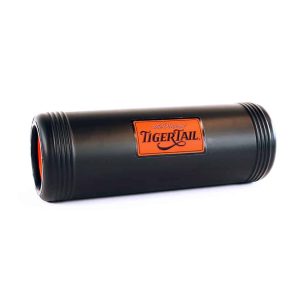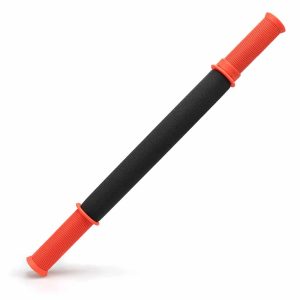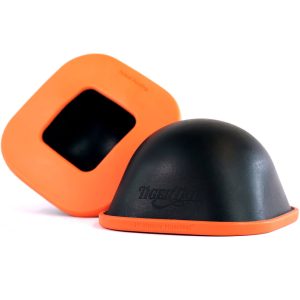Side of Leg Pain

Causes
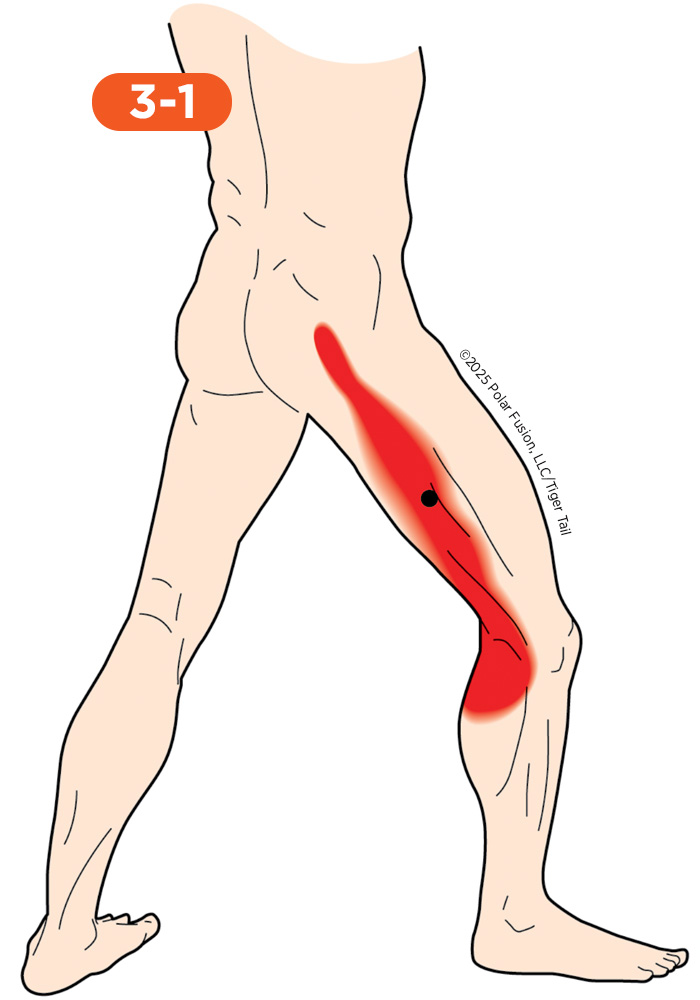
I Feel
Pain or Discomfort Down the Side or Back of Leg
That mysterious pain or discomfort running down the side or back of your leg is often muscle knots in your outer thigh muscle, the vastus lateralis, mimicking nerve pain. The discomfort usually focuses deep towards the outer thigh but is felt as a burning tingle or dull ache that can run along the back of the knee and sometimes into the calf. You’ll find the pain gets worse when you’re doing activities that compress the area, like sitting with your legs crossed, squatting deeply, or even just lying on the affected side at night. Because this massive muscle gets so tight, its muscle knots can easily mimic deeper problems like sciatica or nerve entrapment in the lower back. The back of the outer thigh is often sensitive to pressure, and it can leave the whole leg feeling tight and restricted, especially when you try to bend or pivot.
IT Band Syndrome
That nagging ache you feel on the side of your thigh that seems to wrap right around the knee joint is often caused by those muscle knots in your outer thigh muscle, the vastus lateralis. The pain usually focuses right over the bony part of your outer knee, presenting as a deep, dull ache that sometimes runs all the way up the side of your thigh. You’ll find the pain gets worse when you’re doing things like climbing stairs, sitting for long periods, or doing deep squatting exercises or movements. Because the muscle is so tight, this discomfort can easily mimic deeper problems, such as IT band syndrome or a meniscus tear, which is a common misdiagnosis.
I Feel

I Feel
IT Band Syndrome
That nagging ache you feel on the side of your thigh that seems to wrap right around the knee joint is often caused by those muscle knots in your outer thigh muscle, the vastus lateralis. The pain usually focuses right over the bony part of your outer knee, presenting as a deep, dull ache that sometimes runs all the way up the side of your thigh. You’ll find the pain gets worse when you’re doing things like climbing stairs, sitting for long periods, or doing deep squatting exercises or movements. Because the muscle is so tight, this discomfort can easily mimic deeper problems, such as IT band syndrome or a meniscus tear, which is a common misdiagnosis.

I Feel
Greater Trochanteric Bursitis
That sharp, burning tenderness right on the side of your hip bone is often caused by muscle knots in the small, strap-like muscle on your upper side hip, the tensor fascia latae (TFL). The discomfort usually focuses directly over the large bony prominence of the hip, presenting as a sharp, burning pain that makes it impossible to sleep on that side. You’ll find the pain gets worse when you’re doing activities like standing on one leg, running, or even just lying on the affected side at night. Because the TFL is so close to the joint, its muscle knots can easily mimic deeper problems, such as greater trochanteric bursitis or hip joint arthritis. That upper side hip area is extremely sensitive to pressure, and the muscle leaves your hip feeling guarded and stiff, especially when you try to lift your leg out to the side.
IT Band Syndrome
If you’re dealing with what feels like IT Band Syndrome, the actual source of the problem might be muscle knots in the small, powerful muscle at the top of your hip, the tensor fascia latae (TFL). The pain usually focuses on the outside of the knee and hip, presenting as a tight, burning ache that runs down the side of your thigh along the IT band pathway. You’ll find the pain gets significantly worse when you’re doing repetitive movements, like running for distance, cycling for a long time, or walking down long hills. Because the TFL directly pulls on the IT band, its knots can easily mimic deeper problems associated with the IT band rubbing over the knee joint. The TFL muscle belly itself is sensitive to pressure, and it leaves your hip and knee feeling chronically tight and restricted.
Pain With Prolonged Sitting
That intense pain you get when standing up after prolonged sitting can often be traced back to muscle knots in your upper hip, the tensor fascia latae (TFL). The discomfort usually focuses sharply right on the side of the hip bone, presenting as a deep, pinching ache that gets instantly triggered when you extend your hip. You’ll notice the pain gets worse when you’re doing movements like standing up from a soft couch, climbing up steps, or crossing your legs. Because the TFL remains shortened when sitting, its knots can easily mimic deeper problems, such as hip flexor strain or a labral tear in the hip joint. That upper side hip is often extremely sensitive to pressure, and the muscle leaves your hip feeling tight and restricted whenever you transition from sitting to standing.

I Feel
Pain on the Side of the Hips
Sciatic Like Symptoms
If you’re experiencing pain that feels like a nerve is being pinched, the source could be muscle knots in the front part of the outer hip muscle, the gluteus minimus, mimicking sciatica. The discomfort usually focuses deep in the buttocks, presenting as a burning ache or tingle that can run down the back of the thigh, though it rarely goes past the knee. You’ll find the pain gets significantly worse when you’re doing movements that stretch the buttocks, like sitting with crossed legs, bending over to pick something up, or climbing stairs. Because the tight muscle lies along the path of the sciatic nerve, its knotting can easily mimic deeper nerve problems like true sciatica or piriformis syndrome. The tissue is extremely sensitive to pressure deep in the side of the buttocks, and it leaves the leg feeling tight and restricted, especially when trying to straighten the hip and knee.
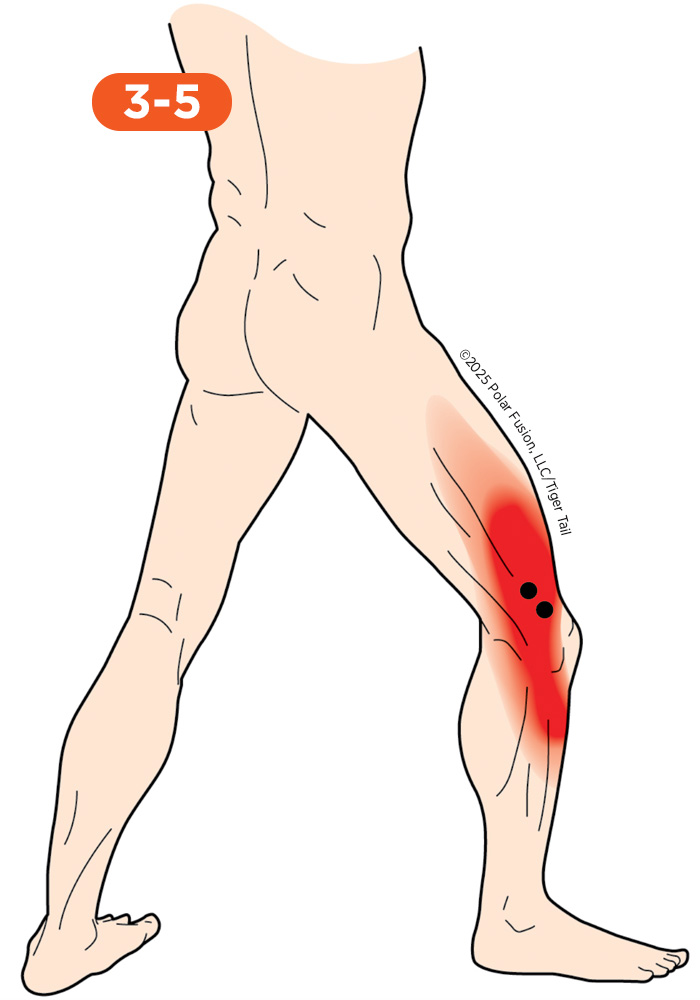
I Feel
IT Band Syndrome
When you’re dealing with pain on the side of your thigh or knee that makes you suspect IT band syndrome, the issue is often intertwined with muscle knots in the large, outer thigh muscle, the vastus lateralis. You’ll feel a sharp, burning ache that can sometimes radiate up the side of your thigh or even down the side of your leg. You’ll find the pain gets significantly worse when you’re doing repetitive actions like running or cycling for distance, climbing stairs, or even just lying on the affected side at night. Because the vastus lateralis can create referred pain that is like the friction of the tight IT band, its knotting can easily mimic deeper problems like IT band syndrome itself or even a meniscus issue. Weak hip muscles, improper training techniques, or even differences in leg length can also contribute to both IT band issues and vastus lateralis tightness.
Stuck Knee Cap
The feeling of a stuck kneecap or limited movement is often caused by muscle knots pulling in the outer thigh muscle, the vastus lateralis. When this happens, the discomfort usually focuses right along the side of the kneecap, presenting as a deep, nagging ache that sometimes runs down to the side of the knee joint. You’ll feel the sensation and pain gets worse when you’re doing activities like squatting down, climbing stairs, or even just sitting with your knee bent for too long. Because this muscle is supposed to glide the kneecap smoothly, knots can mimic deeper problems, such as patellofemoral tracking issues or cartilage damage. The outer thigh tissue can be sensitive to pressure, and it leaves the kneecap feeling tight and restricted, as if it can’t quite move in its groove.

